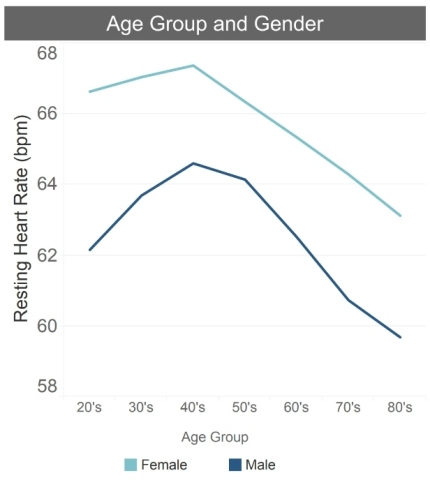With the ever-evolving digital health landscape, wearable technology has integrated itself into healthcare. By accelerating patient insights to providers, wearables offer real-time data to payers and provider organizations, augmenting and informing medical care. A recent study by PwC found that 49% of the United States population owns a wearable device, including fitness bands, smartwatches, smart glasses, smart video/photo devices, and smartphones. By 2022, the wearable device market is expected to exceed $27 billion. With this growth comes an enormous opportunity for innovation and disruption, both within and outside of the healthcare market.
What is a Wearable Device? A wearable device is a product that can be incorporated into daily wear items such as clothing, or used as an accessory to capture data and transmit data bidirectionally between a hub and a source.
Remote Patient Monitoring and Wearable Technology
Particularly in remote patient management and delivery of care across the healthcare ecosystem, wearable technology, and product maturation have enabled providers with real-time data collection, increasing accuracy and informing decision making. Wearables have the potential to improve patient outcomes by monitoring physical health, equipping providers with data they otherwise may not have access to. Miniaturizing ECG, Blood Pressure, Heart Rate, etc. monitoring - these devices continue to disrupt traditional tools of patient data capture.
In a study conducted by the Stanford School of Medicine, in conjunction with the Apple Heart Study - results looked promising among the cohort of 400,000 enrolled participants. The study sought to understand the efficacy and reliability of data captured by the Apple Watch devices, particularly to understand whether the Apple Watch could identify atrial fibrillation (AFib). The study compared the recordings from the Apple Watch to a simultaneous ECG patch and the following key results were identified:
-
The Apple Watch had a 71% positive predictive value, indicating a positive tachogram reading
-
Of the 71% identified, 84% of these participants were found to be positive for AFib
-
Of the participants, 57% of those who received irregular pulse notifications sought medical attention
“The performance and accuracy we observed in this study provides important information as we seek to understand the potential impact of wearable technology on the health system,” said Marco Perez, MD and associate professor of cardiovascular medicine. “Further research will help people make more informed health decisions.”
Wearable devices can capture measures of physical activity, promoting continuous monitoring of heart rate, blood pressure, glucose, and EKG. Many devices on the market also support fall detection, a functionality which has proven vital in the elderly population. Among the more common injuries experienced by the elderly, falls have the potential to create long term adverse effects - including fractures and loss of mobility. Leveraging built-in device accelerometers, wearables have the ability to both detect and predict falls.
In a study conducted at the University of Illinois College of Medicine at Urbana-Champaign - researchers evaluated the efficacy of wearable devices in fall detection. The study’s findings demonstrated fall predictions with an average of 73.7% accuracy and 81.1% precision. Delivering these real-time insights to physicians and care teams is important as early intervention primes providers to prevent avoidable hospitalizations or trips to the emergency department.
Physicians have also found valuable insights from continuous monitoring, driving additional data insight capture beyond basic data captured within the patient’s electronic health record (EHR). These insights collected from wearable devices such as the FitBit offer physicians additional information to personalize treatments and improve patient outcomes. Metrics such as resting heart rate serve as an important metric to gauge cardiovascular health - tied to metrics such as fitness levels, stress levels and early signs of illness or health issues. In an 18 month study conducted by FitBit, the company aggregated anonymized data of global FitBit users. Key findings found that resting heart rates decreased after the age of 40.
 Source: Business Wire, February, 2018
Source: Business Wire, February, 2018
Wearables are primed to play an integral role in the management of chronic disease management and diagnosis. We’ve seen a shift in the healthcare landscape where patients no longer have to seek in-person consultations with a physician, as these services can now be rendered digitally. With AI and data-driven decision making entering the realm of care delivery, wearable technology stands to play a pivotal role in empowering payers and providers to effectively target, treat and triage their patient populations.
The Health Recovery Solutions platform is taking a step forward in leveraging unique sources of data capture, outside of just peripheral transmitted data from devices to our product ecosystem. Now integrated with wearable technology such as the FitBit, Apple Watch, and Withings devices, data insights will be accelerated to our healthcare providers - allowing them to continue to deliver the highest level of patient care.
The future is ripe, and healthcare disruption is in motion - wearables serve to be another innovative component of healthcare in the digital age.
References:
Fitbit's 100 Billion Hours of Resting Heart Rate User Data Reveals Resting Heart Rate Decreases After Age 40. (2018, February 14). Retrieved from https://www.businesswire.com/news/home/20180214005548/en/.
Hua, A., Quicksall, Z., Di, C., Motl, R., LaCroix, A. Z., Schatz, B., & Buchner, D. M. (2018, July 11). Accelerometer-based predictive models of fall risk in older women: a pilot study. Retrieved from https://www.nature.com/articles/s41746-018-0033-5#Sec4.
News Center. (n.d.). Apple Heart Study demonstrates ability of wearable technology to detect atrial fibrillation. Retrieved from https://med.stanford.edu/news/all-news/2019/03/apple-heart-study-demonstrates-ability-of-wearable-technology.html.
Russey, C., Russey, C. R. C., Russey, C., & Russey, C. (2018, December 13). New PwC Study Reveals Consumers Use Wearables to Stay Fit and Live longer. Retrieved from https://www.wearable-technologies.com/2018/12/new-pwc-study-reveals-consumers-use-wearables-to-stay-fit-and-live-longer/.
